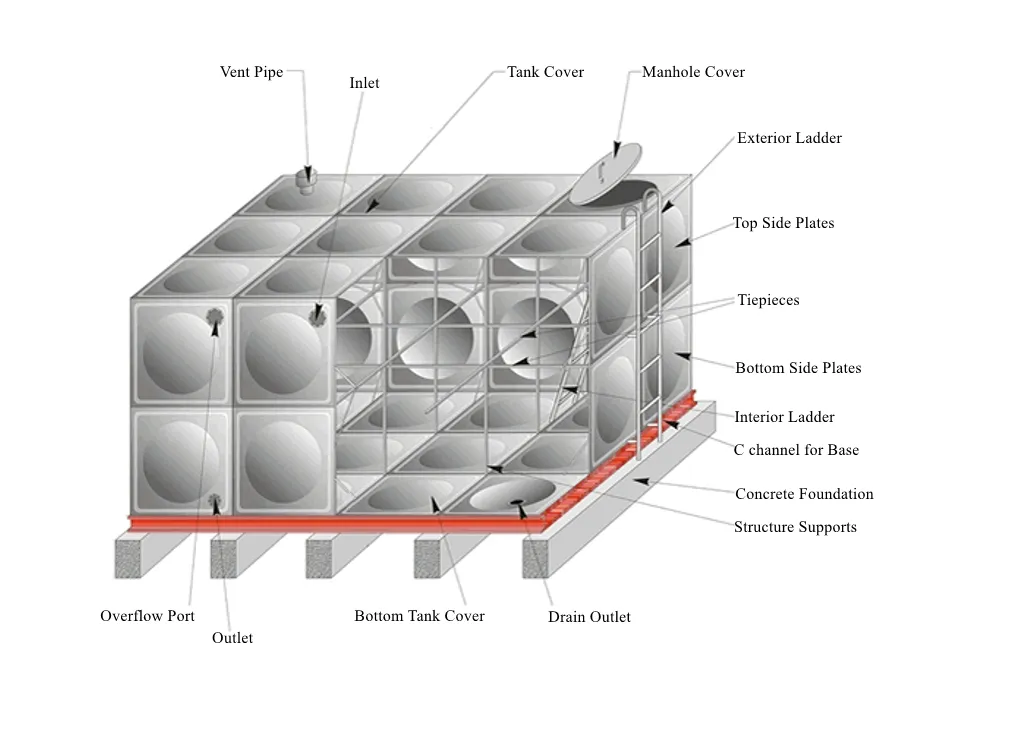loading...
- No. 9, Xingyuan South Street, Dongwaihuan Road, Zaoqiang County, Hengshui, Hebei, China
- admin@zjcomposites.com
- +86 15097380338
- Welcome to visit our website!
Innovative Applications of Fiber Reinforced Polymer Steel Bars in Construction
The Advancement of FRP Steel Bars in Modern Construction
In recent years, the construction industry has been undergoing a significant transformation driven by advancements in materials technology. One of the most innovative developments is the use of Fiber Reinforced Polymer (FRP) steel bars. These composite materials offer a range of benefits over traditional steel reinforcement, making them increasingly popular in various applications, from infrastructure to architectural design.
What are FRP Steel Bars?
FRP steel bars are composite materials that combine high-strength fibers (such as glass, carbon, or aramid) with a polymer matrix. This unique combination results in a material that is not only lightweight but also possesses exceptional tensile strength and corrosion resistance. Unlike traditional steel bars, which are prone to rust and degradation over time, FRP bars can withstand harsh environmental conditions, making them ideal for use in areas exposed to moisture, chemicals, or saline environments.
Advantages of FRP Steel Bars
1. Corrosion Resistance One of the most notable advantages of FRP steel bars is their resistance to corrosion. In traditional concrete structures, steel reinforcement can corrode due to moisture and chemicals, leading to structural deterioration. FRP bars, however, remain unaffected by such conditions, significantly extending the lifespan of the structure.
2. Lightweight FRP bars are considerably lighter than conventional steel bars. This attribute simplifies handling and installation, reduces transportation costs, and minimizes the overall weight of the structure. This can be particularly advantageous in designs where weight is a critical factor, such as in bridges or high-rise buildings.
3. High Strength-to-Weight Ratio The high strength-to-weight ratio of FRP bars allows for the design of more slender structures without compromising structural integrity. Engineers can achieve greater design flexibility and innovative architectural forms that were previously hard to realize with traditional materials.
4. Non-Magnetic and Non-Conductive FRP bars do not conduct electricity or magnetism. This makes them suitable for applications in areas such as telecommunications and power generation, where interference or induction issues may arise due to metal reinforcement.
frp steel bar

5. Sustainability The production of FRP materials often has a lower environmental impact compared to traditional concrete and steel. Moreover, the longevity and durability of FRP reinforced structures contribute to sustainable building practices by reducing the need for repairs and replacements over time.
Applications of FRP Steel Bars
The versatility of FRP steel bars has led to their application in various sectors. In civil engineering, they are used for reinforcing bridges, tunnels, and parking garages, where harsh conditions can lead to rapid deterioration of traditional materials. In marine environments, such as piers and docks, the corrosion resistance of FRP bars is invaluable. Furthermore, the increasing focus on sustainable construction methods has seen FRP materials being adopted in green building practices, interior applications, and even precast concrete elements.
Challenges and Considerations
Despite their numerous advantages, the use of FRP steel bars is not without challenges. The initial cost of FRP materials can be higher than that of traditional steel, which may deter some projects, especially those on a tight budget. Additionally, the technical knowledge required for the proper design and installation of FRP systems is still evolving, and engineers may need additional training to maximize the benefits of these materials.
Moreover, while FRP bars have excellent tensile properties, they often do not provide the same levels of compressive strength as steel, which can necessitate changes in design approaches. Ongoing research and development are focused on addressing these issues to better integrate FRP materials into mainstream construction practices.
Conclusion
FRP steel bars represent a significant advancement in construction materials, offering a combination of strength, durability, and sustainability that is increasingly appealing to engineers and architects alike. As the industry continues to recognize the potential of these composite materials, we can expect to see their use grow, paving the way for innovative and resilient structures that meet the demands of modern society. The future of construction may very well lie in the integration of FRP technology, creating safer, more durable, and environmentally friendly building solutions.
-
GRP Structures: The Future of Lightweight, High-Performance EngineeringNewsJun.20,2025
-
FRP Water Tank: High-Performance Storage for Corrosive and Clean Water SystemsNewsJun.20,2025
-
FRP Square Tube: The New Industry Standard for Chemical and Structural ApplicationsNewsJun.20,2025
-
FRP Pultruded Profiles: The Ultimate Choice for Lightweight Structural StrengthNewsJun.20,2025
-
FRP Handrails: The Safer, Smarter, and Stronger Choice for Modern InfrastructureNewsJun.20,2025
-
FRP Grating: The Smart Solution for Durable, Lightweight Industrial FlooringNewsJun.20,2025
-
Why Choose a Galvanized Water Tank for Your Storage NeedsNewsMay.21,2025
